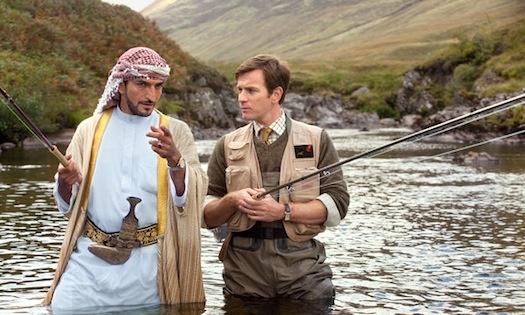Today I am posting my article published in AmericaEconomia.com earlier this year. It talks about the vital importance of humility and patience in business – two characteristics discussed during the Global Drucker Forum last week in Vienna, Austria. Here is the link to the article ¿Qué tienen en común la pesca y los negocios? and below is the article in full.
EMC
¿Qué tienen en común la pesca y los negocios?
En una escena de la película “La pesca del salmón en Yemen”, basada en la novela del mismo nombre escrita por Paul Torday, el doctor Alfred Jones, un científico especializado en piscicultura, conversa con un jeque yemenita sobre la pesca. El jeque explica por qué ama la pesca: “admiro a los pescadores. Sólo se preocupan de los peces, el río y el juego”. Más allá, dice, la pesca fomenta virtudes como la paciencia y la humildad.

Courtesy: fishingintheyemen.com
En la pesca se encuentran muchas similitudes con negocios internacionales. Para hacer este tipo de negocios, una organización tiene que salir a otros “aguas” y adaptarse a diferentes idiomas, culturas y prácticas de negocios. Los resultados publicados por las empresas internacionales en sus informes anuales muestran que las alianzas y fusiones corporativas en el extranjero tienen una tasa de fracaso del 40 al 80%, porque no logran los resultados esperados en términos de ingresos, creación de valor o reducción de costos. Una forma de mitigar el riesgo implícito al hacer negocios internacionales -como en la pesca-, es conocer el ámbito donde se quiere estar en la adquisición de información, conocimientos y experiencias a través de expertos locales.
Otra característica clave de los negocios internacionales de alto riesgo es que la empresa tiene que tener fe en que un premio importante le está esperando después de atravesar el proceso de identificación, negociación y cierre del negocio. Un pescador sueña con pescar el pez gordo después de invertir innumerables horas esperando que un pez se acerque y muerda el anzuelo. Lo mismo sucede con los atletas y equipos deportivos exitosos. Tienen que saborear la victoria y estar preparados para ella, puliendo sus hábitos de tal manera que sepan por instinto cómo actuar antes de que se acerquen sus competidores.
Wayne Gretsky, el atleta de mejor puntaje en la historia de la Liga Nacional de Hockey canadiense, decía: “un buen jugador de hockey va donde está el disco, un gran jugador de hockey va donde estará el disco”. Un proyecto internacional de éxito requiere de visión, práctica y acción oportuna.
Hay una similitud importante con la pesca durante la fase de negociación de un proyecto, que tiene que ver con aguas quietas y aguas turbulentas. Cuando el agua está quieta, los peces se toman más tiempo en estudiar la situación y probar el anzuelo. En cambio, cuando los peces se encuentran en aguas corrientes de ríos, riachuelos o torrentes, existe mayor probabilidad de que pierdan la oportunidad de comer si vacilan mucho tiempo. Los peces actúan rápidamente y sin reflexión en aguas turbulentas. Los negociadores internacionales usan como ventaja el sentido de urgencia en la identificación de factores en el ambiente y la manipulación de los mismos. Los negociadores exitosos pueden cambiar la percepción del ambiente para lograr los objetivos de la negociación o simplemente si sienten que el ambiente es demasiado cómodo. Para ellos, la negociación es un juego donde los cambios sutiles pueden afectar el resultado logrado.
¿Y vale la pena la pesca en otros “aguas”? Los mercados emergentes están creciendo el doble que los mercados desarrollados, por lo tanto, el mercado emergente es atractivo. Sin embargo, esto no significa que las empresas en los mercados emergentes no exploren oportunidades de expansión hacia mercados tradicionales.
De hecho, el Boston Consulting Group (BCG) publica cada año un estudio de “global challengers” (contendientes globales) de los mercados emergentes que están entrando con éxito a los mercados desarrollados, con creciente presencia de mercado o, a veces también, con la compra de empresas de dichos mercados. Un ejemplo estrella es el Grupo Bimbo que compró las operaciones norteamericanas de Sarah Lee’s y luego las de Weston Foods en los EE.UU., para convertirse en la mayor empresa de pan en Norteamérica, desde el año 2009.
Los proyectos internacionales, al igual que la pesca, requieren de fe, perseverancia y humildad. A veces se busca el premio en los mercados emergentes y a veces son las firmas latinoamericanas las que incursionan con firmeza en los mercados tradicionalmente establecidos y lo hacen con mucho éxito.






